Alpine Draws: Everything You Need to Know (2024 Guide)
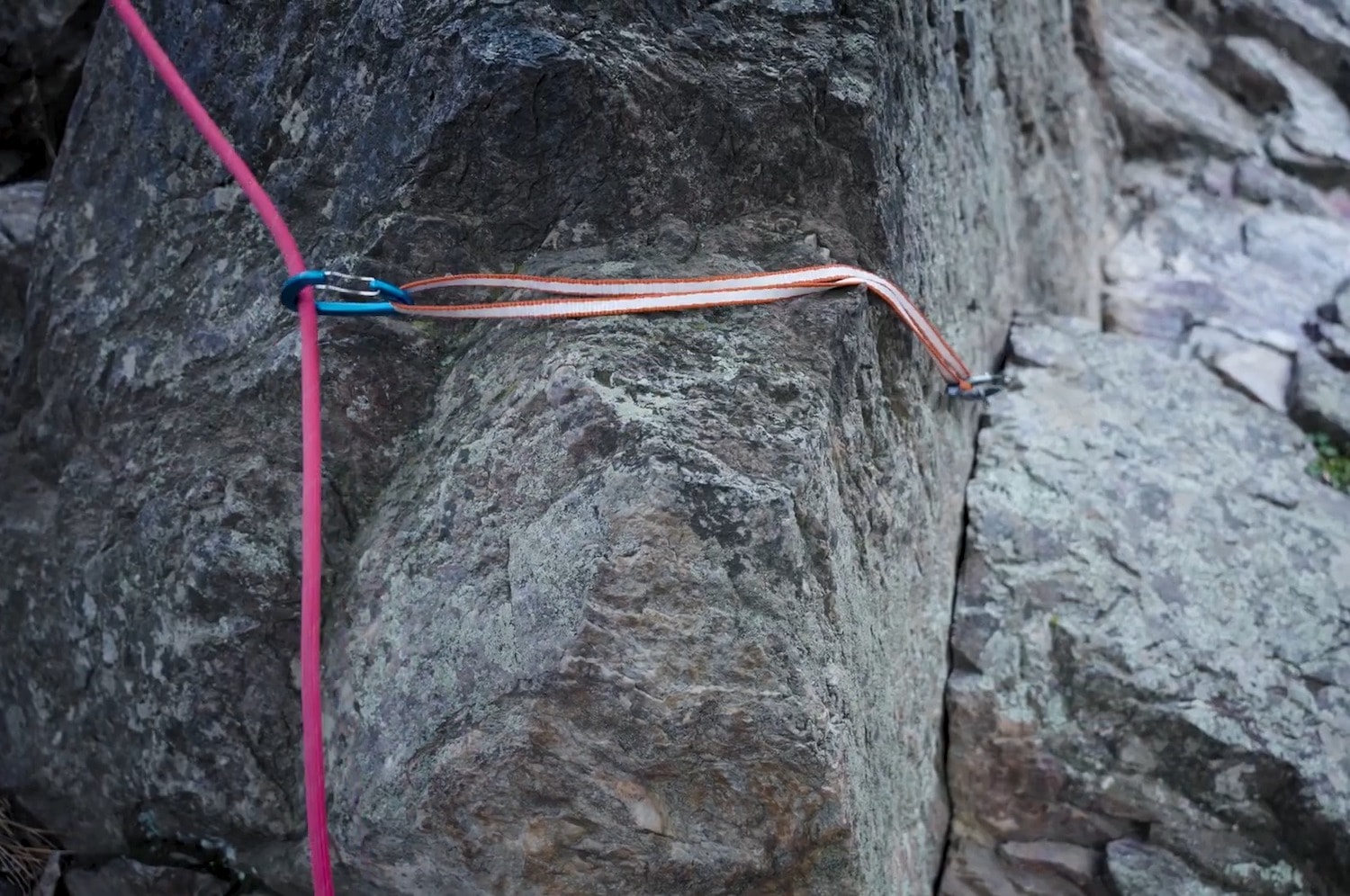
Published on: 03/09/2023
One of the most critical components of a rock climber’s arsenal of climbing gear is – the quickdraw. Equally important, yet not as well known, is the alpine draw.
Never heard of an alpine draw? Read on to learn about alpine draws, why they are important, how they are used, and how they differ from sport draws.
What’s an Alpine Draw?
Alpine draws–also known as alpine quickdraws, alpines, or extendable draws–are highly versatile and functional pieces of rock climbing equipment. The name “alpine quickdraw” comes from, you guessed it – alpine climbing.
Alpine routes frequently contain long pitches, wandering terrain, and traverses. Therefore, using extendable draws to extend protection and mitigate rope drag is essential. In addition, versatility is critical in alpinism. Alpine draws are simply more versatile than traditional sport draws.
However, don’t let the name dissuade you. Alpine draws are not only for alpine climbing. They are also super useful for climbers in other disciplines.
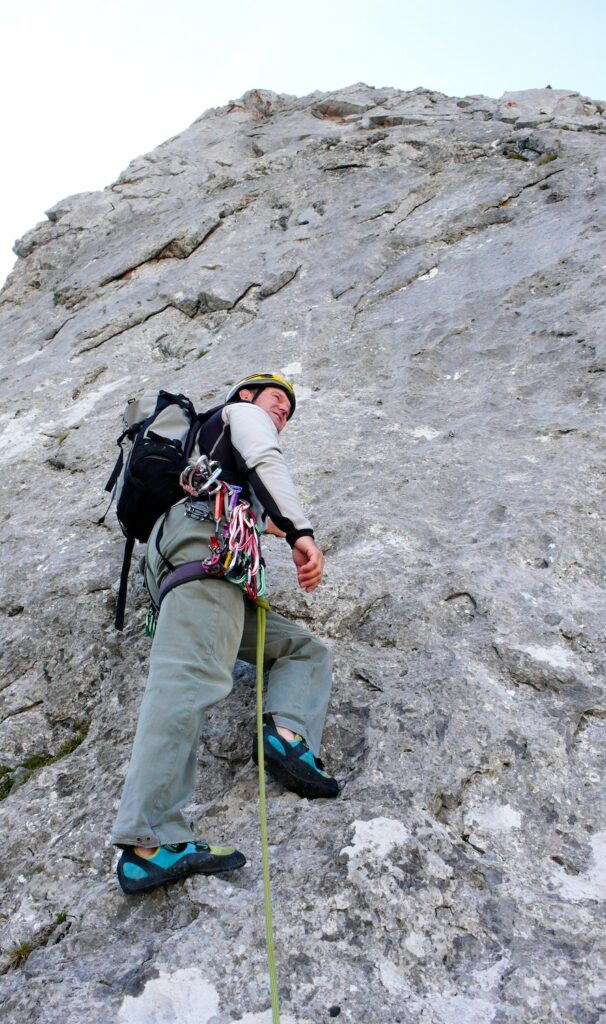
The Purpose for Using Alpine Draws
Alpine draws have many valuable purposes. However, they have two primary purposes.
- To minimize rope drag
- To mitigate the “walking” of climbing protection
Minimizing Rope Drag
In wandering trad routes, your rope can zig and zag back and forth as you clip pieces of protection. Your rope may also run around corners, get stuck in cracks, and rub over roofs. All of these scenarios will create rope drag.
Rope drag makes climbing more difficult and even unsafe. It’s harder to move upwards and clip. And even worse, your rope may be exposed to sharp edges.
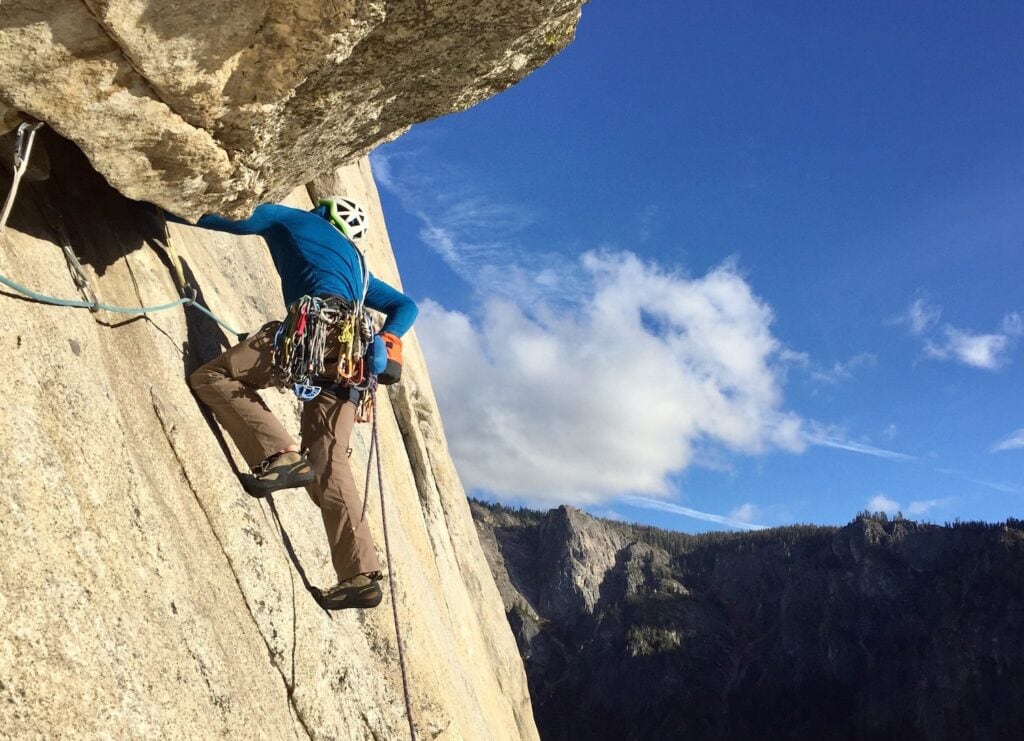
When you extend your protection points, whether they are cams or bolts, you create a straighter rope line and mitigate zig-zagging. A straighter rope line drastically reduces rope drag, making your climbing experience more enjoyable and less risky.
Mitigating Walking
Extending pieces of protection with a longdraw also mitigates the “walking.” Walking is most common with camming devices. When a cam walks, it wedges itself further and deeper into the crack. If it walks enough, it may become unretrievable.
Cams without alpine draws are more susceptible to walking because the weight and action of the rope move the cam. Conversely, cams with long draws walk less because the weight and action of the rope are isolated away from the cam.
The Components of Extendable Draws
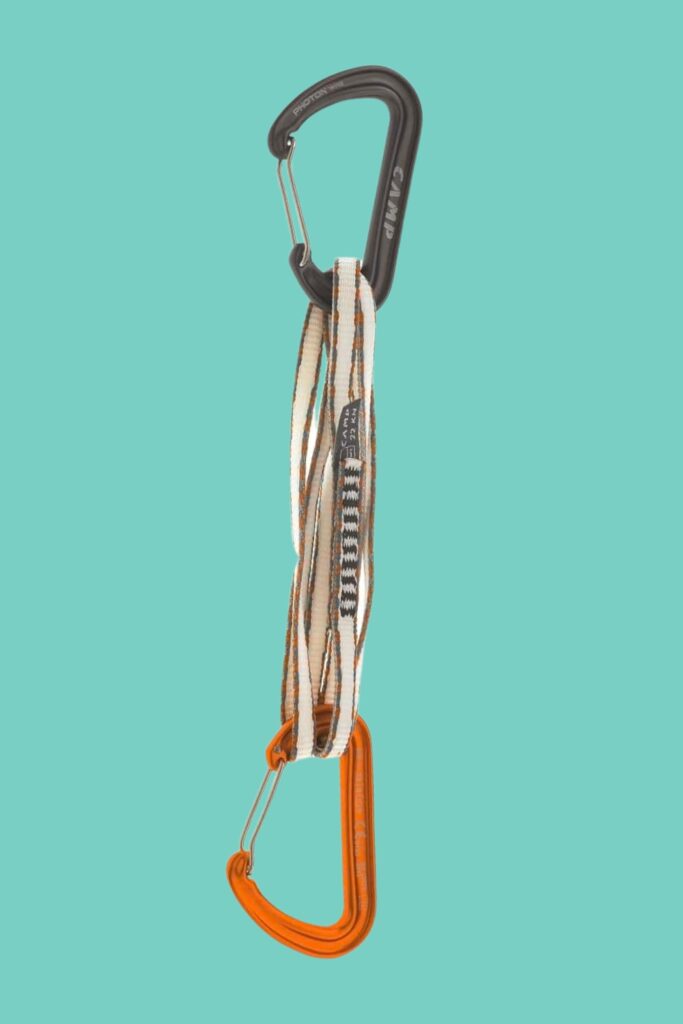
Alpine draws consist of two non-locking carabiners, also known as snap gate carabiners, and a 60cm or “shoulder length” sling.
In most cases, the non-locking carabiners are wire gate carabiners. However, they can also be solid gate carabiners.
Nowadays, extendable draws are made with Dyneema slings because it’s lighter and absorbs less moisture. However, in the past, nylon slings were more common.
Differences Between Alpine and Sport Climbing Draws
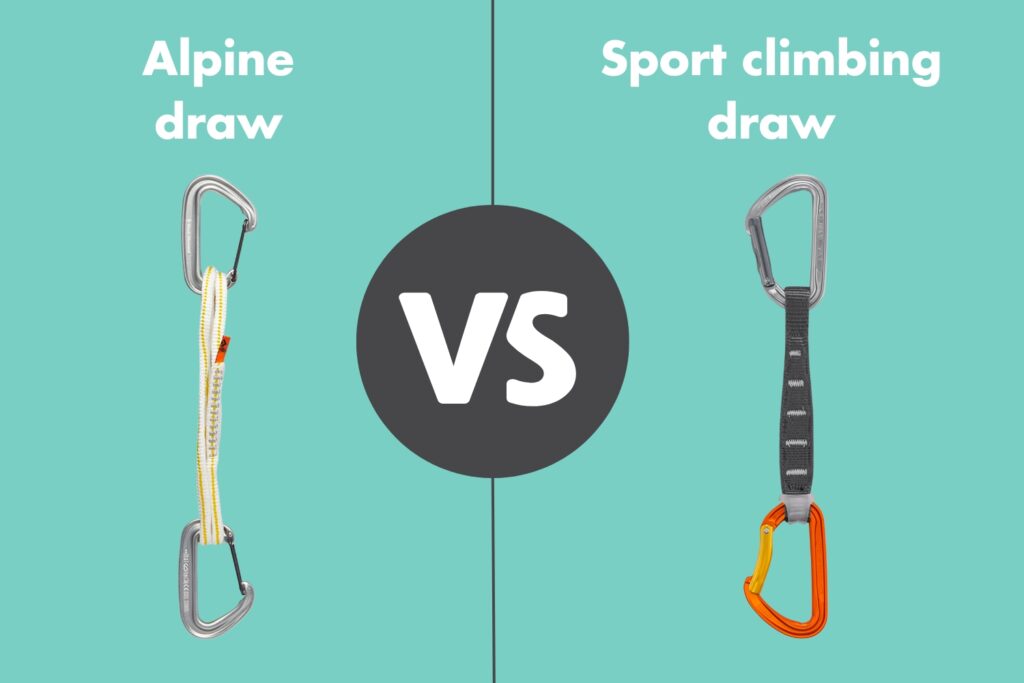
There are many subtle nuances and differences between alpine, and sport draws, such as material type, weight differences, and types of carabiners. However, two primary differences are most important.
- The material connecting the two carabiners on sport draws, also known as the dogbone, is not extendable. On the other hand, alpine draws can be clipped in their non-extended and extended orientations.
- A sport draw has a dedicated carabiner for clipping the rope that is housed within a rubber keeper to prevent it from becoming cross-loaded. The other side is used for clipping bolt hangers. On the other hand, either carabiner of an alpine quickdraw can be clipped.
How to Rack an Alpine Draw
When you create an alpine draw for the first time you need to rack it, so it fits neatly on your harness in its non-extended orientation. Racking an extended draw looks like you’re just folding it in half, but it’s more nuanced than that.
- Clip both carabiners to your shoulder-length sling.
- Take a carabiner in each hand. Pass one carabiner through the other.
- Next, bring the passed-through carabiner back in the direction it came from and clip it to both strands of the sling.
Recommended Alpine Quickdraw Starter Packs
If you want to, you can build extendable draws from scratch. Or you can also purchase pre-built starter packs.
- Black Diamond MiniWire Alpine Draws
- C.A.M.P Alpine Express Dyneema Quickdraws
- Trango Phase Matte Alpine Quickdraws
Alternate Uses for Alpine Draws
When you boil them down, alpine quickdraws are simply two locking carabiners and a sewn loop of webbing. This sounds simple because it is. However, do not let their simple design trick you into thinking they’re only valuable for simple trad climbing scenarios.
Their simple design is the number one reason why they are so versatile. You do not only have to use them to extend gear while trad climbing.
Let’s take a look at some of the alternate usages for alpine draws to highlight their versatility.

Using them on a sport climb
Alpine quickdraws are not solely used in the discipline of trad climbing. You can use them on sport climbs, also.
- You can clip alpine draws to bolts and extend them to mitigate rope drag on wandering routes or routes where bolts are placed underneath roofs, bulges, or overlaps.
- Sometimes, bolts are placed in insecure or exposed stances. After clipping it to the bolt, an alpine quickdraw can be extended to give the climber the ability to clip from a lower, more comfortable stance.
Building anchors
Alpines can be used to build anchors in both traditional climbing and sport climbing contexts.
In traditional climbing, you can use alpine draws to extend pieces of your anchor just like you would with other pieces of protection. Depending on the scenario and the available protection, you can also use a single alpine to build a two-piece bomber anchor. However, remember that an anchor is generally understood to need three pieces of protection.
In sport climbing, you can use alpine draws in their non-extended orientation to build simple and efficient anchors on two bolts. In addition, you can extend them to lower your master point into a better position.
Tethering
You can use an alpine draw to tether to a master point. In its extended orientation, the sling can be girth hitched to the belay loop or the two tie-in points, and the carabiner can be clipped into the master point.
For added security, replace the non-locker with a locker, or use the original two non-locking carabiners in an opposite and opposed orientation to simulate a locked carabiner.

Racking gear
A fully extended alpine quickdraw does not only need to be used in climbing or anchor-building scenarios. You can also use the sling to rack climbing equipment and transport everything to and from the crag in a simple and practical way without an extra, purpose-built gear sling.
Final Thoughts: Get Yourself Some Alpines!
Extendable alpine draws are one of the most versatile and functional pieces of climbing equipment a climber can have on their harness. They are the ideal tool for mitigating rope drag, preventing cams from walking, building anchors, and so much more.
Get yourself some! Remember– have fun and check your knots!
Frequently Asked Questions (FAQs)
A 60cm or single or shoulder-length sewn sling, is best for alpines.
The material choice comes down to personal preference. However, the majority of modern alpines use Dyneema or something similar.
How many alpines you carry is based on the length of the pitch, the type of climbing, and how often you want to protect yourself. But if you want a “full” rack of alpines, I recommended having between 10 and 12.

